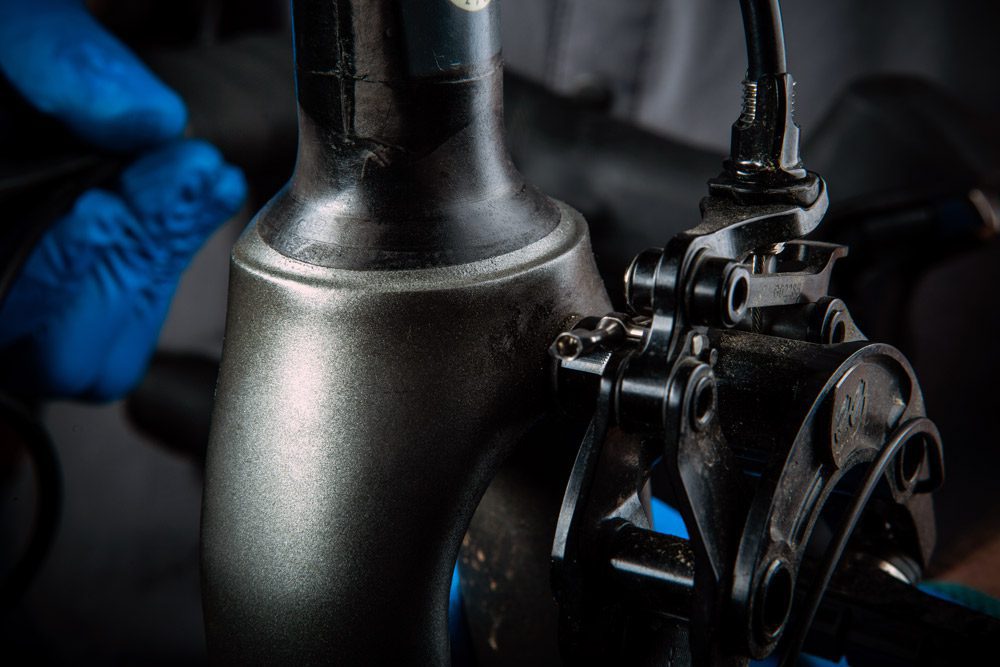We Are Open and Have Returned to Normal Operations
Previous slide
Next slide
Press-fit headsets are only compatible with press-fit style headtubes. Press-fit head tubes have an open bore, with no molded or integrated races inside the head tube.
Ensure that you have the correct size headset for your bike’s head tube dimensions. If you are unsure, you can read our article, Everything You Need To Know About Headsets or you can ask your local bike shop.

In some cases, your fork may have an integrated crown race, where no press-on crown race would be needed. Integrated crown race forks will have a molded race on the base of the steerer tube. If this is the case you can skip this step.
If you need to remove the old crown race, you should use a Crown Race removal tool. Park Tool makes a great Crown Race removal tool and they have detailed instructions on how you can remove your old crown race.

Integrated Crown Race
If your fork steerer tube is already cut to length, and has a star-nut or a compression plug installed inside, then you can skip this step. If you need to cut your fork steerer tube to length, you can consult Park Tool’s Fork Steering Column Length And Sizing Guide
If your fork steerer tube is already cut to length, and has a star-nut or a compression plug installed inside, then you can skip this step. If you need to cut your fork steerer tube to length, you can consult Park Tool’s Fork Steering Column Length And Sizing Guide
Now that the lower bearing is ready to be installed, set the fork aside and get your upper bearing cover assembly, headset spacers, and handlebar stem within arm’s reach.
Monday: 10:00 am – 5:00 pm
Tuesday – Thursday: 10:00 am – 5:00 pm
Friday: 10:00 am – 5:00 pm
Saturday – Sunday: Closed